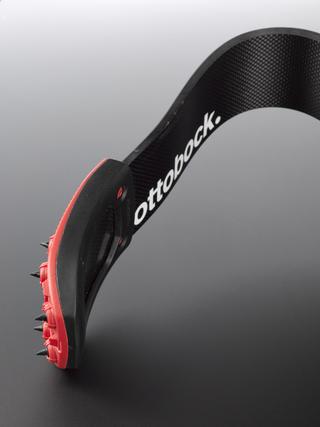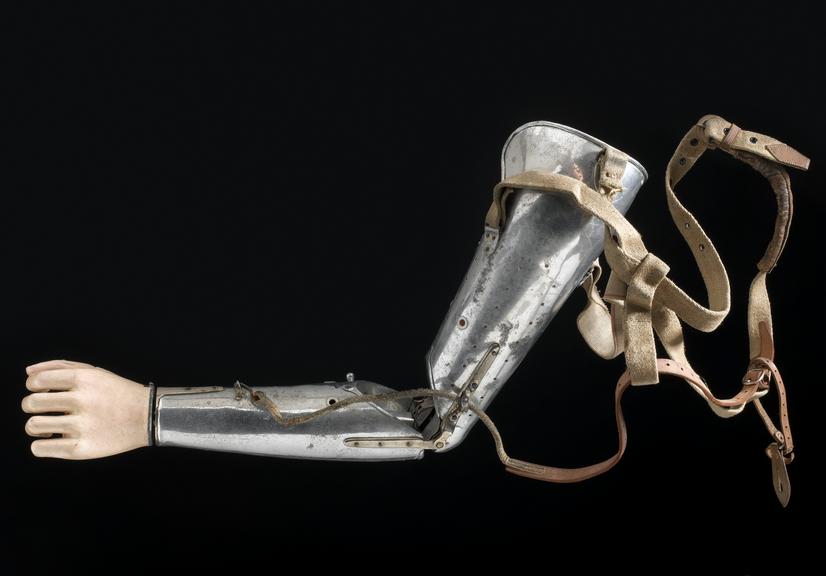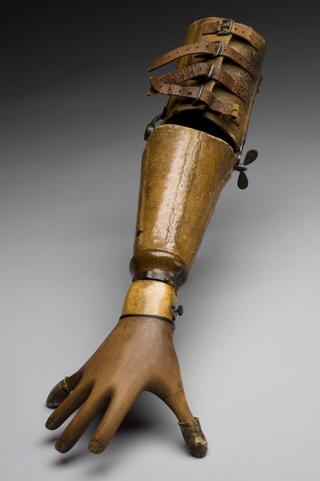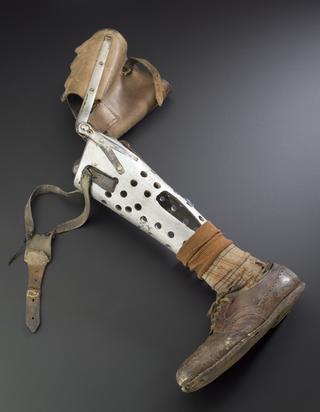
Artificial left arm, London, England, 1927




Artificial left arm, metal, with hand and canvas shoulder strap, adjustable joints, McKay Artificial Limb Co. of London, 1927
Made from aluminium, this prosthetic left arm has a canvas coated hand to give the appearance of a gloved hand. The fingers of the hand are set in position. The joints of the arm are adjustable and the hand is removable. Aluminium was preferred to wood as it was much lighter and was more comfortable for the wearer. As such it is one of a new generation of metal limbs that appeared in the 1920s and which gradually replaced the predominantly wooden ones. The arm is strapped to the shoulder with padding.
The McKay Prosthetic Limb Company who made this arm was one of a number of companies set up during and immediately after the First World War. They were seeking lucrative government contracts to supply soldiers who had lost limbs in the conflict. Among British forces alone, over 41,000 men lost one or more limbs.
Details
- Category:
- Orthopaedics
- Collection:
- Sir Henry Wellcome's Museum Collection
- Object Number:
- A653498
- Materials:
- aluminium, ? material, shoulder strap, canvas and shoulder strap, leather
- type:
- artificial arm




